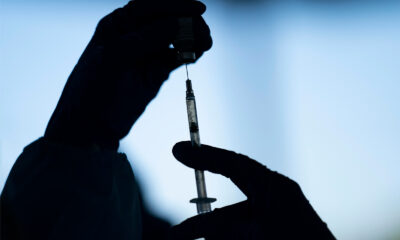According to a large case series recently published in Burns, a sudden rise in Stevens-Johnson syndrome (SJS), a rare and potentially fatal skin disorder, may be brought on by COVID-19, higher vaccination rates, or a lowered threshold brought on by vaccines or prior infections.
Prior to COVID-19, researchers at Concord Repatriation General Hospital in Australia observed two to four cases of SJS, also known as toxic epidermal necrolysis (TEN), annually. The same burn center saw a sevenfold increase in cases just in the first half of 2022.
Three of the 14 patients had received a COVID-19 vaccination a month prior, and five of the 14 patients had COVID-19 a month prior to developing SJS/TEN. There have been zero cases of SJS/TEN in unvaccinated people.
The rarity of the condition and the existence of drugs known to cause the disease make the connection difficult to demonstrate, but the researchers called the sharp increase in cases since the start of the pandemic and the introduction of the vaccine “alarming.”
A severe hypersensitivity condition known as SJS/TEN causes the skin to develop rashes, blisters, and peels, giving the appearance of a severe hot water burn. Sepsis, pneumonia, infection, or death can result from mucous membranes, including those in the mouth, eyes, and genitalia.
Although SJS and TEN were once thought to be distinct illnesses, they are now considered to be symptoms of the same disease, with SJS being the less severe form and TEN being the most severe.
Medications, including epilepsy medicines, antibiotics, and anti-inflammatory painkillers, are the chief cause of SJS/TEN, but certain viruses and vaccines can also cause the condition. Due to its potentially fatal nature, SJS/TEN is considered a medical emergency, and patients are treated in burn units.
Researchers’ 3 Theories for Sudden Rise in SJS/TEN Cases
The researchers proposed three theories for the sudden increase in SJS/TEN cases.
Virus-Induced
According to the first hypothesis, the SARS-CoV-2 virus may cause SJS/TEN by physically attaching to receptors that cause a T-cell-mediated response. Herpes simplex, Epstein-Barr, and influenza viruses are some of the other viruses that have been linked to SJS/TEN.
Vaccine-Induced
The second theory, COVID-19 vaccines may directly bind to the cell receptors that cause SJS/TEN and have an impact on the body’s T-cell immune response that causes SJS/TEN. This T-cell response peaked seven and 28 days after vaccination, which is in line with the cases that were actually seen.
Two patients had received an mRNA vaccine, and one had received a viral vector vaccine, within a month of developing SJS/TEN in the study’s three cases that were linked to vaccination. Eight additional cases of SJS after COVID-19 vaccination were discovered by researchers in the published literature; four of these cases were connected to mRNA vaccines, three to viral vector vaccines made by companies like AstraZeneca and Johnson & Johnson, and one to a whole virus vaccine.
According to the U.S. Vaccine Adverse Event Reporting System (VAERS), 198 cases of SJS/TEN following COVID-19 vaccination were reported between Dec. 14, 2019, and June 23, 2023. Historically, VAERS has been shown to report fewer than 1 percent of actual vaccine adverse events, which means other cases of SJS/TEN may have occurred but were unreported.
Threshold Lowering
According to the authors’ third hypothesis, getting COVID-19 or getting vaccinated “primes” the immune system and lowers the threshold at which a drug will cause SJS/TEN. As shown in each of the following instances, the drug would not otherwise result in the condition without this “priming”:
- A 26-year-old male received two previous doses of a viral vector vaccine and one mRNA vaccine dose. After experiencing vaccine-associated symptoms, he took paracetamol and ibuprofen and developed SJS. He had previously taken both medications with no adverse effects.
- A 60-year-old female had COVID-19 six weeks before the onset of SJS/TEN. During that time, she received allopurinol for gout and experienced a reaction, despite taking the drug in the past with no ill effect. The woman had received two doses of an mRNA vaccine.
- A 45-year-old male developed a reaction to a seizure prophylaxis drug. He was diagnosed with COVID-19 four weeks before developing SJS/TEN and was triple vaccinated with an mRNA vaccine.
- A 53-year-old female received a viral vector vaccine three weeks before the onset of SJS/TEN. She was quadruple vaccinated with viral vector and mRNA vaccines and reacted to medications received for a life-threatening scleroderma complication.
The potential connection between SJS/TEN and COVID-19 vaccines has not been acknowledged by regulatory bodies in the US or abroad, nor have they looked into how the virus or vaccine can prime the immune system.The authors of the study recommend further investigation into the effects that viruses like SARS-CoV-2 have on immune-mediated diseases like SJS/TEN.






































You must be logged in to post a comment Login